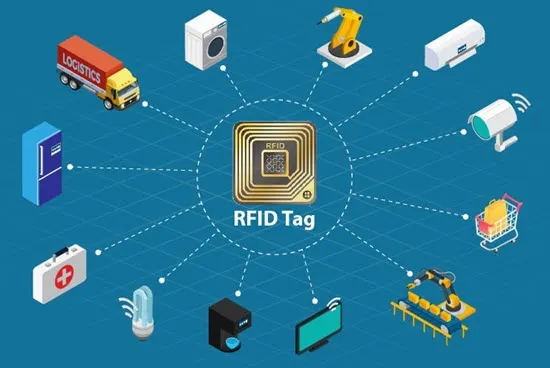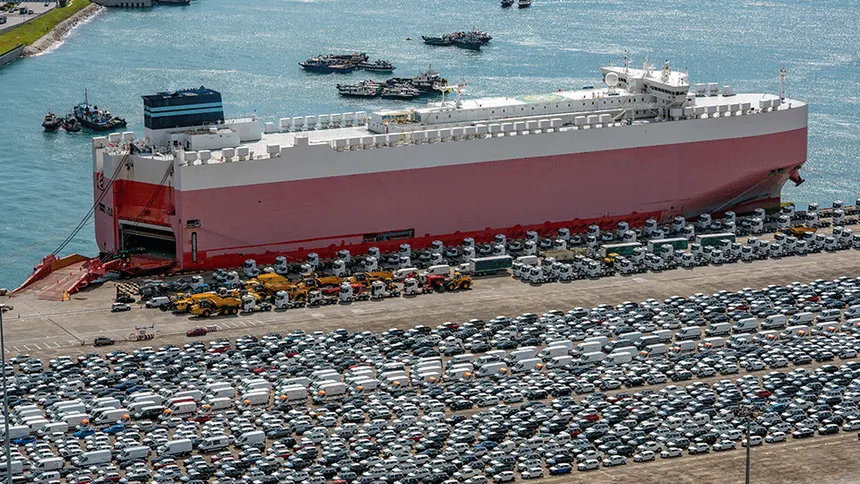In the fast-paced world of maritime logistics, ports face mounting pressure to optimize operations while minimizing delays and costs. Among the most challenging aspects of port management is the efficient tracking and coordination of thousands of vehicles moving through complex terminals daily. While much attention has been given to container tracking solutions, a quiet revolution is taking place in how ports could monitor, manage, and optimize vehicle movements through advanced multi-camera tracking technology.
This overlooked innovation has the potential to transform port operations by creating seamless visibility across vast terminal areas, reducing congestion, and eliminating the inefficiencies that have long plagued vehicle management in ports worldwide.
The Vehicle Management Challenge in Modern Ports
Before exploring the potential of multi-camera tracking, let's understand the critical challenges facing port vehicle management today:
- Limited Real-Time Visibility: Current vehicle management processes often rely on manual inspections and disconnected monitoring systems, creating operational blind spots across the berth.
- Unauthorized Long-Term Storage: Without continuous tracking, unauthorized vehicle storage can go undetected, consuming valuable space and creating congestion.
- Inefficient Berth Planning: Limited visibility makes validating actual space availability for incoming vessel planning difficult, leading to suboptimal space allocation.
- Vessel Delays Due to Congestion: Berth congestion can force vessels to wait, resulting in costly delays and disrupted schedules.
- Lack of Stakeholder Accountability: Without objective data, resolving disputes between ports, stevedores, and transporters becomes nearly impossible, as there's no single source of truth.

Credit: Identec Solutions
"The maritime industry is on the cusp of a transformation, and those who act decisively now will lead the way in shaping the future of global trade." - Nils Kemme, Managing Director bei HPC Hamburg Port Consulting GmbH
The Limitations of Traditional Approaches
Current solutions for vehicle tracking in ports face significant limitations that prevent them from fully addressing these challenges:
- Automated Number Plate Recognition (ANPR) is ineffective with unregistered vehicles commonly found in ports
- Manual inspections are time-consuming and provide only periodic snapshots rather than continuous visibility
- CCTV footage review requires substantial human resources and typically happens after issues have already occurred
- Traditional visual recognition systems often struggle to differentiate between similar-looking vehicles
- Hardware-based tracking solutions require significant investment and ongoing maintenance
What Makes Multi-Camera Tracking Different?
Unlike traditional single-camera monitoring or siloed camera systems, multi-camera tracking creates a cohesive network that can follow vehicles seamlessly throughout the entire port ecosystem. Here's what makes this approach potentially revolutionary:
1. Continuous Cross-Camera Identity Preservation
The core innovation of multi-camera tracking is its ability to maintain consistent vehicle identity as objects move between camera views. Advanced computer vision algorithms can recognize the same vehicle across multiple cameras, even when it temporarily disappears from view or changes appearance due to lighting or perspective shifts.
This identity preservation creates an unbroken digital trail of each vehicle's movement throughout the port, eliminating the information gaps that plague traditional systems.
2. Spatial Awareness and Geofencing
Modern multi-camera tracking systems can map camera views to real-world coordinates, creating a digital twin of the port environment. This spatial mapping enables:
- Real-time positioning of all vehicles with high accuracy
- Automatic detection of vehicles in unauthorized or restricted areas
- Virtual boundary enforcement without physical barriers
- Predictive congestion detection based on vehicle density patterns
3. Software-Based Approach
Perhaps the most significant advantage of multi-camera tracking is that it can potentially operate without requiring hardware installation on the vehicles themselves. Unlike systems that require physical tags or transmitters on each vehicle, multi-camera tracking can leverage existing camera infrastructure, supplemented with strategic camera additions where needed.
This approach reduces implementation barriers and can provide comprehensive tracking without the logistical challenges of equipping thousands of visiting vehicles.

Credit: Camcode
Potential Benefits for Port Operations
Multi-camera tracking technology has the potential to deliver significant operational and strategic benefits:
Comprehensive Real-Time Visibility
By tracking vehicles across the entire port, multi-camera systems have the potential to create a comprehensive digital representation of berth operations. This could allow:
- Instant location of any vehicle within the facility
- Real-time monitoring of berth utilization
- Automated alerts for vehicles exceeding authorized dwell times
- Complete tracking of vehicle movements throughout their entire stay
Data-Driven Decision Making
The continuous tracking data could be transformed into actionable insights, including:
- Berth utilization metrics and trends
- Vehicle dwell time analytics
- Throughput rates and operational KPIs
- Capacity forecasting and planning tools
These insights could shift port operations from reactive to proactive management, enabling optimization of scheduling and addressing bottlenecks before they impact vessel operations.
Stakeholder Accountability and Transparency
Berth operations involve complex coordination between the port, stevedores, and transporters, creating an environment where disputes naturally arise. Without objective data, accountability becomes nearly impossible. Stevedores claim 'there's no space for new shipments' while transporters argue 'we couldn't access our vehicles.' These disputes often remain unresolved because ports lack a single source of truth to verify competing claims.
Multi-camera tracking could address this core issue by creating a digital record of all berth activities, with timestamps and locations for every vehicle. When a stevedore claims there's no space, or a transporter disputes storage fees, the port would have factual evidence to inform decision-making.
Such systems could potentially provide role-based access to different stakeholders, allowing stevedores to see real-time berth status and transporters to locate specific vehicles, while the port maintains complete oversight.
Implementation Considerations
Ports considering multi-camera tracking solutions should evaluate several key factors:
Camera Infrastructure Requirements
Effective multi-camera tracking requires strategic camera placement with:
- Sufficient coverage of key operational areas
- Appropriate camera specifications (resolution, frame rate, low-light performance)
- Weather-resistant housings for marine environments
- Network connectivity and power availability
Processing Requirements
The computational demands of multi-camera tracking can be significant. Ports should consider:
- Local processing capabilities for video analysis
- Network bandwidth requirements
- Data storage needs for operational records
- Integration requirements with existing port systems
Future Potential of Multi-Camera Tracking
The multi-camera tracking approach is still evolving, with several emerging capabilities that could further transform port vehicle management:
AI-Powered Pattern Analysis
Advanced systems could analyze vehicle behaviors and patterns to:
- Detect unauthorized movements or security breaches
- Identify optimization opportunities based on movement patterns
- Predict potential congestion or bottlenecks
- Recommend process improvements based on operational data
Integration with Autonomous Systems
As ports begin deploying autonomous vehicles for internal operations, multi-camera tracking could play a crucial role in:
- Providing environmental awareness for autonomous navigation
- Coordinating mixed traffic of autonomous and human-operated vehicles
- Creating safety zones and monitoring areas
- Supporting navigation systems for autonomous vehicles
Multi-Modal Tracking Extensions
The principles of multi-camera tracking could potentially extend beyond vehicles to create unified visibility of all port assets and operations:
- Tracking containers alongside the vehicles carrying them
- Monitoring personnel movements for safety and security
- Coordinating equipment deployment and utilization
- Creating comprehensive operational awareness across all port activities
Conclusion: The Future of Port Vehicle Management
Multi-camera tracking technology represents a significant opportunity for ports to address the longstanding challenges of vehicle management. By creating comprehensive visibility without requiring extensive hardware deployment, this approach has the potential to transform how ports monitor, manage, and optimize vehicle movements.
The technology's ability to create seamless visibility could eliminate the blind spots and disconnects of traditional monitoring approaches, creating the foundation for truly intelligent port operations. As global supply chains face increasing pressure for efficiency and reliability, ports that implement advanced tracking solutions stand to gain significant competitive advantages through reduced congestion, improved throughput, and enhanced service levels.
While implementation requires careful planning and consideration of infrastructure requirements, the potential operational benefits make multi-camera tracking a compelling option for forward-thinking port operators looking to elevate their vehicle management capabilities to meet the demands of modern maritime logistics.
